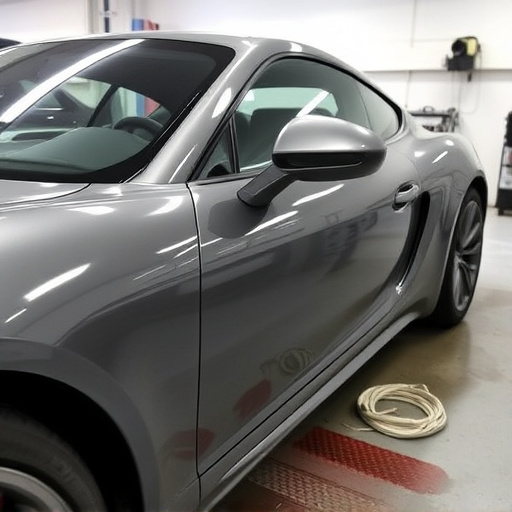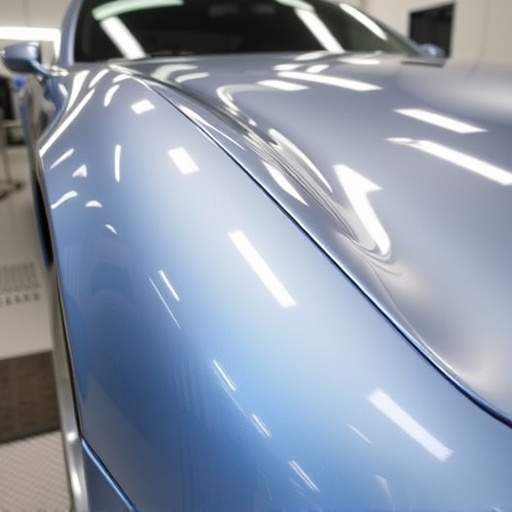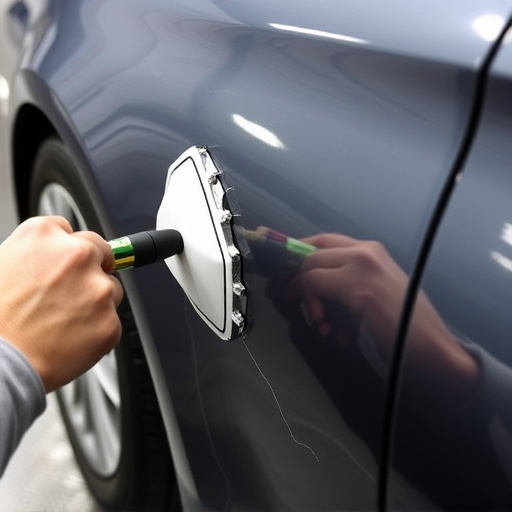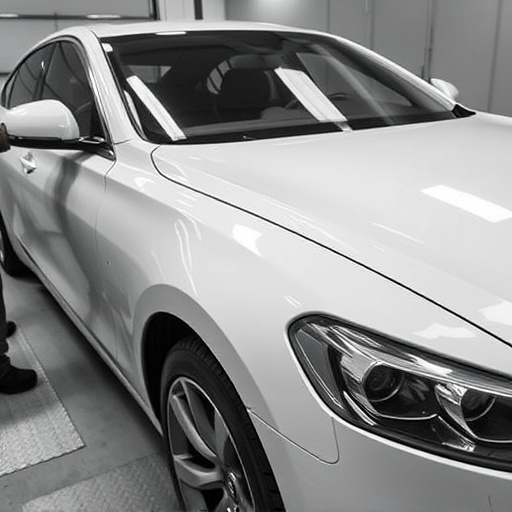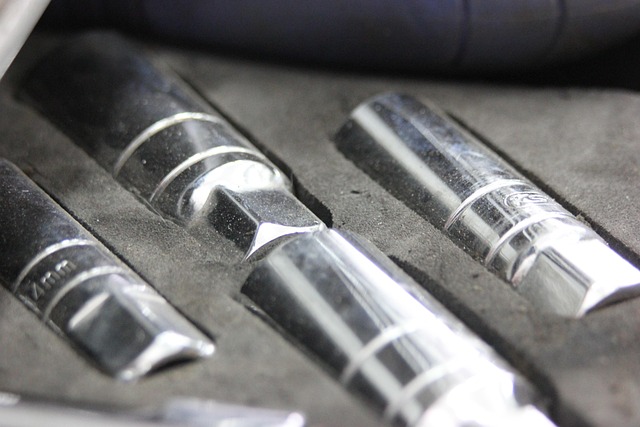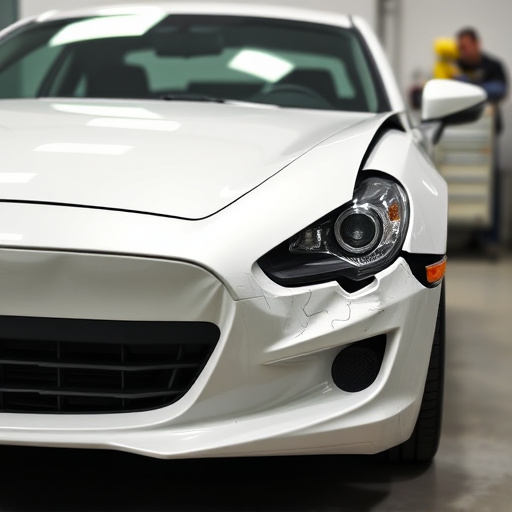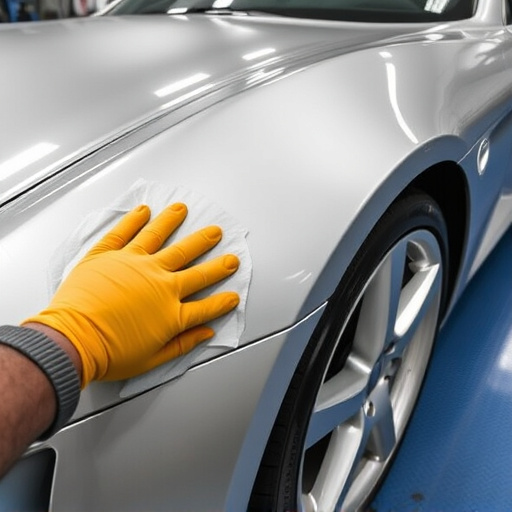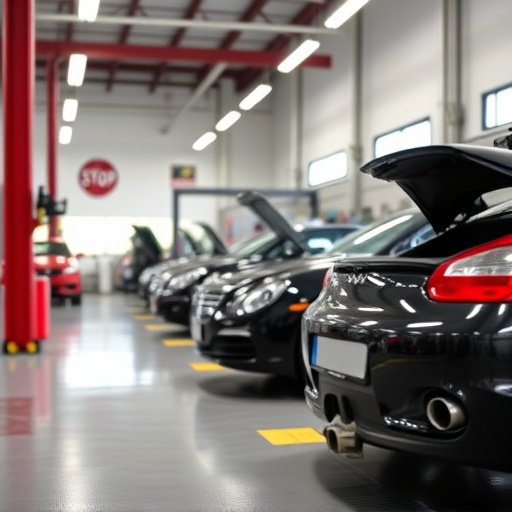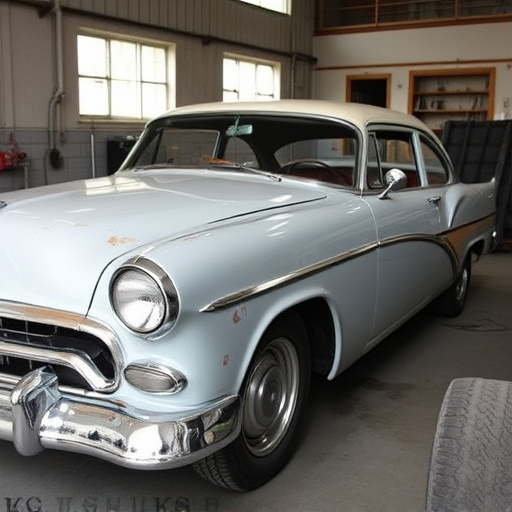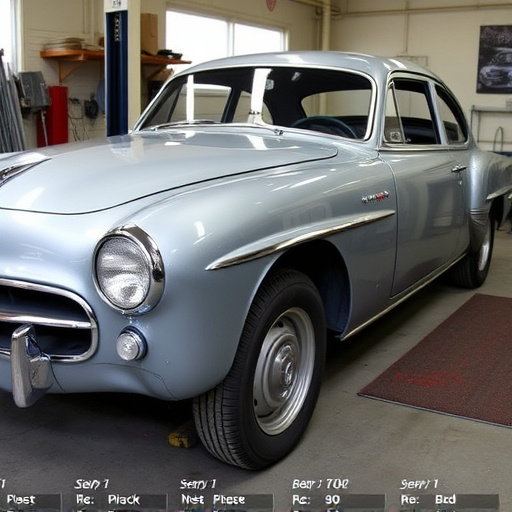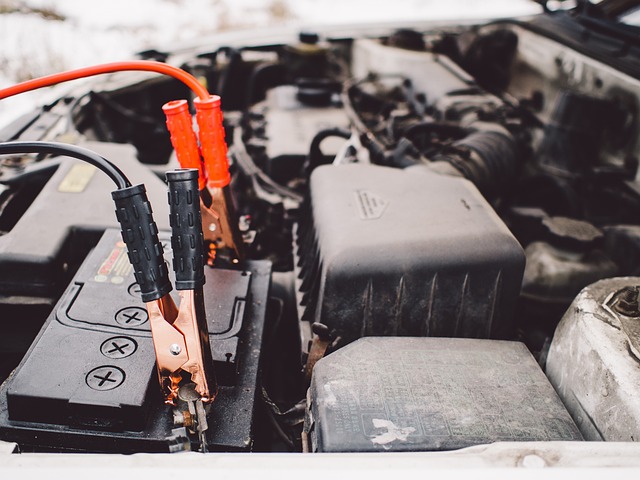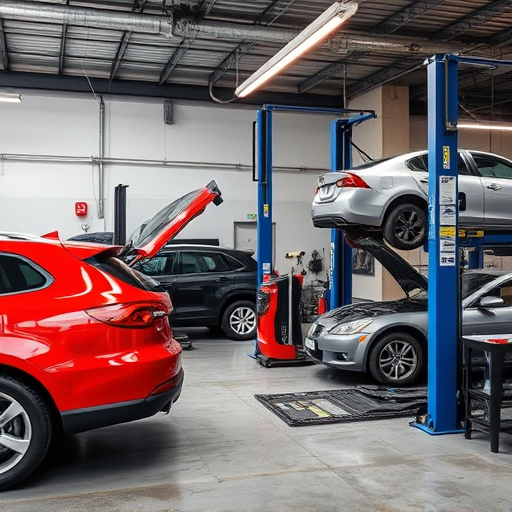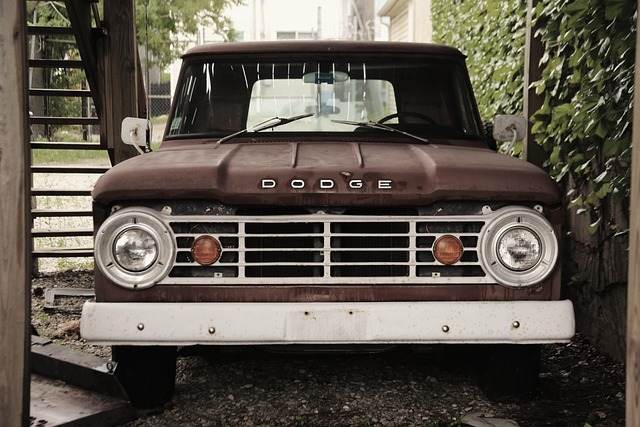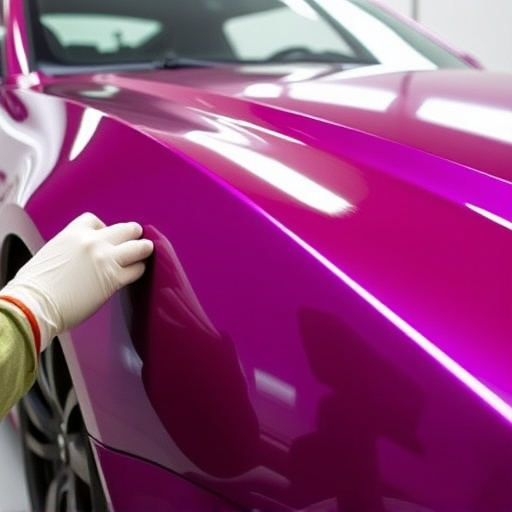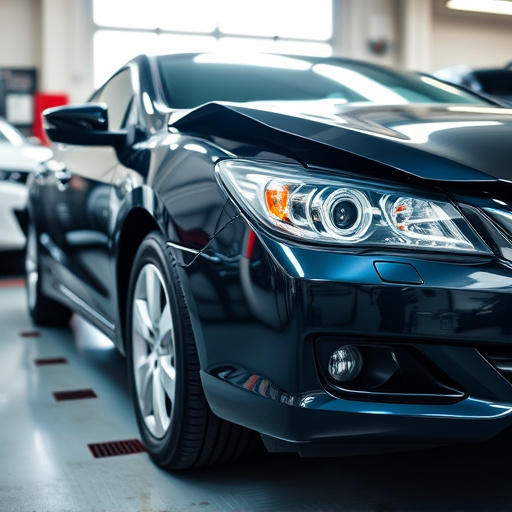Welding is essential in metal fabrication collision repair, offering versatile techniques like arc and gas welding for structural repairs and precision auto body work. Skilled technicians use these methods to restore vehicle integrity, prevent corrosion, and maintain design aesthetics, especially crucial for luxury cars like Mercedes-Benz. While presenting challenges like skilled labor and paint preservation, proper training and equipment make welding indispensable in the automotive industry.
Welding is a cornerstone process in metal fabrication, crucial for collision repair and beyond. This essential technique fuses metallic components, enabling the restoration and reinforcement of damaged vehicles, from crumpled fenders to structural frames. Understanding welding processes, their integration into collision repair techniques, and the advantages they bring, reveals why this art and science are indispensable in modern automotive care.
- Understanding Welding Processes in Metal Fabrication
- The Role of Welding in Collision Repair Techniques
- Advantages and Challenges: Why Welding is Indispensable
Understanding Welding Processes in Metal Fabrication
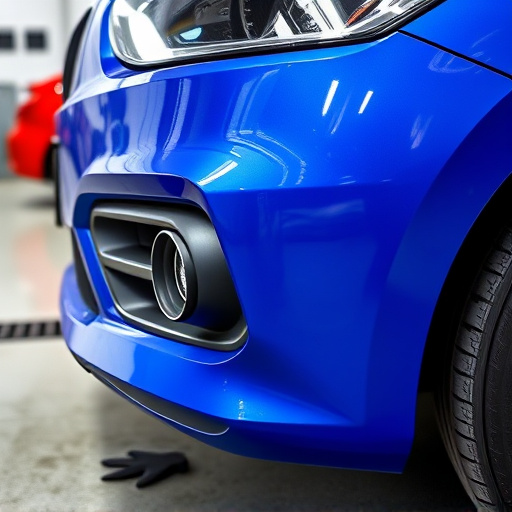
Welding is a fundamental process in metal fabrication, playing a pivotal role in various industries, including collision repair. Understanding welding involves grasping different techniques and their applications. The most common methods include arc welding, gas welding, and laser welding, each with unique advantages. Arc welding, for instance, is versatile and suitable for structural repairs, while gas welding is often preferred for precision work in auto body repairs. These processes involve fusing metal pieces by applying heat, creating strong bonds that restore integrity to damaged components.
In the context of metal fabrication collision repair, welding ensures the structural integrity of vehicles post-accident. Skilled technicians use these techniques to mend panels, frames, and other metal structures, effectively returning vehicles to their pre-collision condition. Moreover, proper welding practices prevent future issues like corrosion and strength deterioration in auto body repairs, ensuring safety and longevity for all types of vehicle makes and models.
The Role of Welding in Collision Repair Techniques
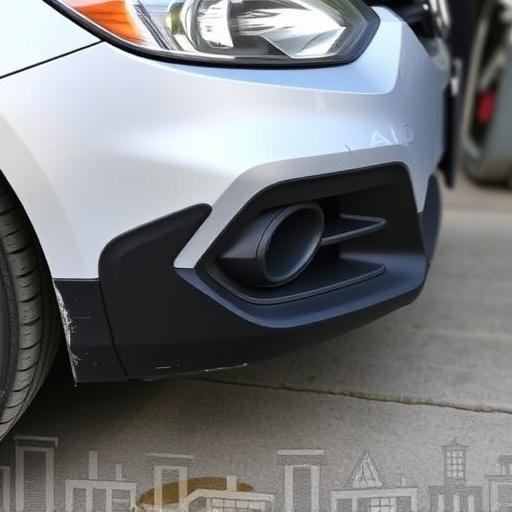
Welding plays a pivotal role in modern collision repair techniques for metal fabrication, especially in the intricate world of luxury vehicle repair. It’s a fundamental process that allows technicians to expertly restore and reforge damaged vehicle bodywork, ensuring structural integrity and seamless finishes. In the case of Mercedes-Benz collision repair, for instance, welding is not just about joining metal; it’s about preserving the car’s iconic design and meticulous craftsmanship.
Through precise welding techniques, damages such as dents, crumples, and broken panels can be effectively addressed. This involves melting and fusing metals together to create strong bonds that match the original vehicle specifications. The skill lies in balancing heat input, metal properties, and joint design to avoid weaknesses or visible imperfections in the final repair—a crucial consideration for maintaining the overall aesthetic and value of the vehicle bodywork.
Advantages and Challenges: Why Welding is Indispensable
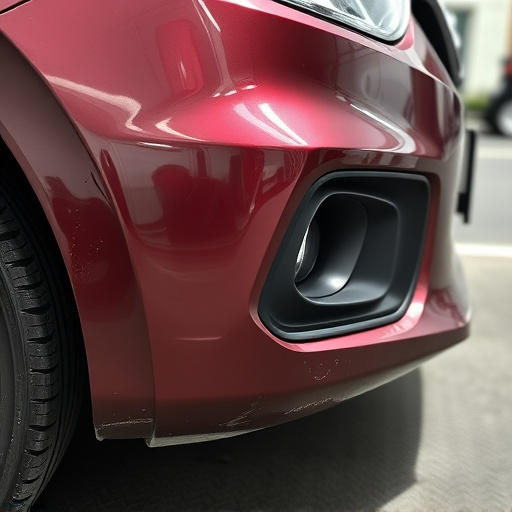
Welding is a critical process in metal fabrication collision repair, offering both significant advantages and unique challenges. Its importance cannot be overstated, especially in the automotive industry where precision and structural integrity are paramount. Welding allows for the seamless fusion of metal components, enabling the restoration of vehicle bodywork to its original strength and aesthetics. This process is indispensable for auto body repair, ensuring that damaged vehicles can be effectively repaired without compromising their structural integrity.
Despite its benefits, welding presents several challenges. Skilled welders are essential to ensure the quality and safety of the repairs. Inaccurate welding techniques can lead to weak joints, affecting the overall durability of the vehicle’s bodywork. Additionally, in vehicle paint repair, careful consideration must be given to preserving the existing paint job while welding, as poor handling of this aspect can result in unsightly marks or even paint chipping. However, with proper training and modern equipment, these challenges can be overcome, ensuring that welding remains a vital tool in the arsenal for metal fabrication collision repair professionals.
Welding plays a pivotal role in metal fabrication collision repair, offering both advantages and challenges. By understanding the various welding processes and their application in collision repair techniques, professionals can ensure robust and durable repairs that match the original vehicle’s structural integrity. Despite some challenges, welding remains indispensable due to its ability to join metals seamlessly, facilitating efficient restoration of damaged vehicles while ensuring safety and reliability on the road.
